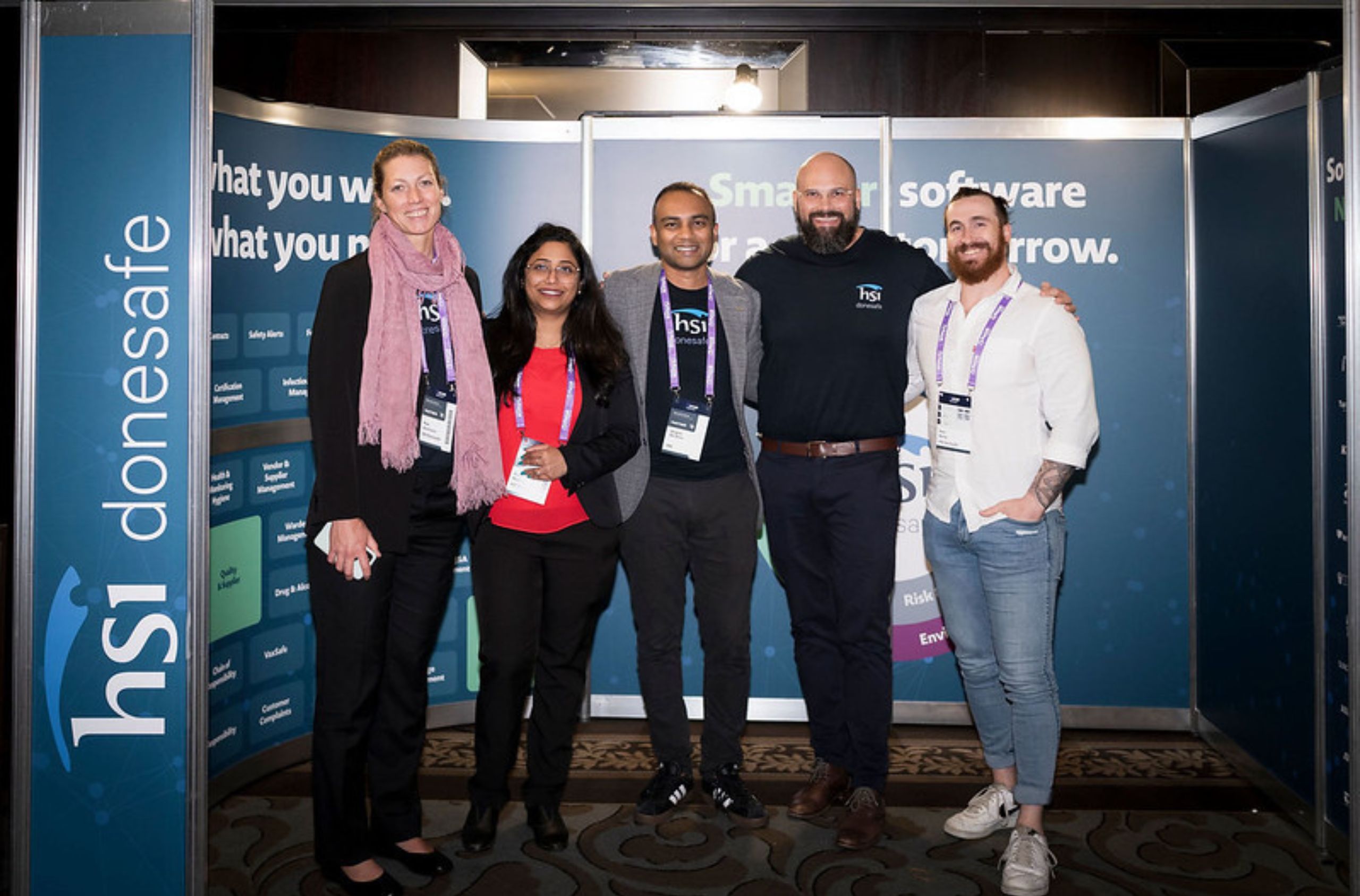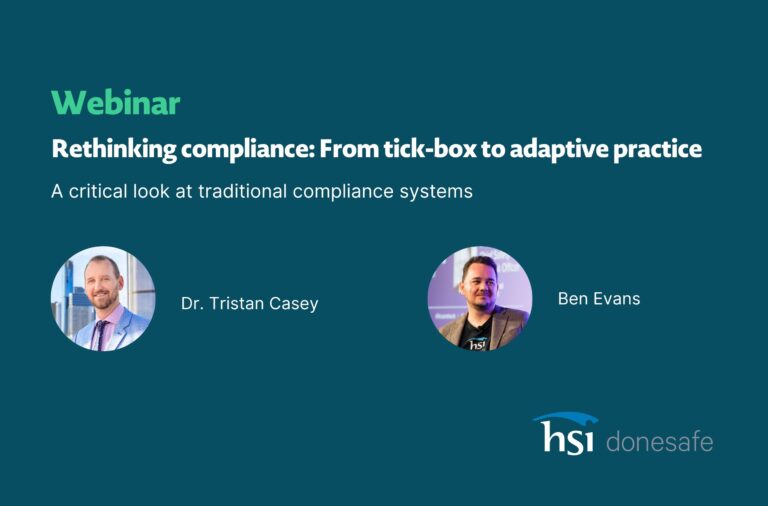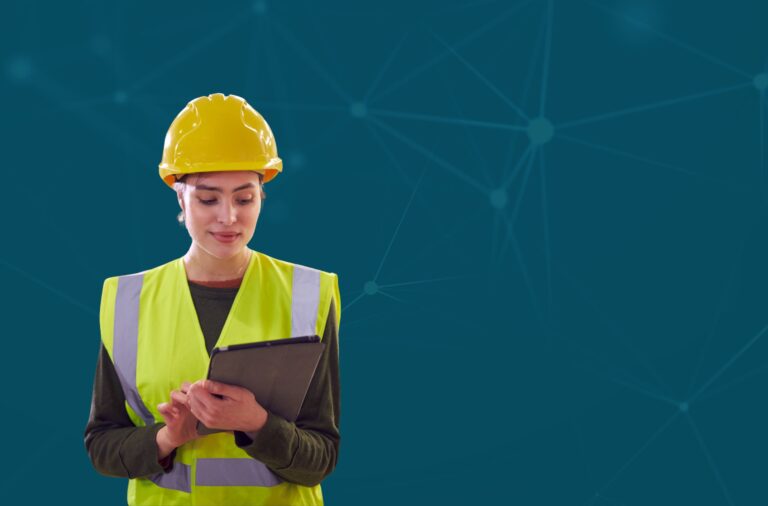
When it comes to workplace health and safety, the stakes have never been higher. At this year’s OHS Leaders Summit in New Zealand, industry experts, thought leaders, and safety professionals came together to ask one vital question: How can we redefine safety for a changing world?
The conversations were as dynamic as the challenges we face, and the answers were as innovative as the tools we now have at our disposal. From transforming leadership approaches to harnessing technology, the summit wasn’t just about theory—it was about actionable insights that every safety leader can adopt today.
Here’s what stood out.
1. From Rules to Relationships
Kurt Warren’s (Head of HSEQ & Sustainability, Hansen Yuncken) keynote set a powerful tone.
“We don’t need more rules. We need a culture of listening.”
Safety leadership isn’t about adding layers of bureaucracy—it’s about making genuine connections with workers and creating environments where people feel valued and heard.
One of the most impactful takeaways? Leadership transformation starts at the boardroom but is lived out on the frontlines. Building trust and engaging teams in decision-making can turn compliance into a culture of care.
Takeaway: Safety leaders must focus on people-first strategies to drive lasting change.
2. Tackling Psychosocial Risks
Mental health in the workplace has finally taken center stage. The panel discussion, led by Ben Evans (Director of Product Marketing and Customer, HSI Donesafe), tackled the complexities of psychosocial risks—those invisible hazards like stress, burnout, and workplace tension that erode productivity and morale.
The panel agreed: addressing these risks requires systemic change. It’s not enough to offer employee wellness programs if the work environment itself is the source of harm. Data-driven insights, job redesign, and a commitment to building supportive cultures are the way forward.
Takeaway: Organizations must shift their focus from treating symptoms to redesigning work environments for holistic wellbeing.
3. The Technology Transformation
AI, digital tools, and automation are no longer the future—they’re the now. Several sessions at the summit explored how these innovations are transforming safety practices. From using AI to predict risks before they materialize to mobile apps that streamline compliance, the opportunities are endless.
But technology isn’t just about efficiency; it’s about empowering safety leaders to focus on what matters most—people.
Takeaway: Embrace tech as an enabler, not a replacement, for human-centered safety strategies.
4. Lessons from the Columbia Space Shuttle
Nigel Packham’s (Associate Director, Safety and Mission Assurance, NASA Johnson Space Center) sobering recount of the Columbia disaster was a stark reminder of why we can’t afford to cut corners on safety. His analysis of the crew’s survivability highlighted the critical importance of learning from failures and implementing changes that prevent history from repeating itself.
Safety isn’t just about avoiding risks; it’s about creating systems where the unthinkable is not only anticipated but mitigated.
Takeaway: Every mistake is an opportunity to learn, evolve, and safeguard the future.
5. The Power of Buy-in
Complexity kills engagement. As Craig Dodds (Head of Health, Safety & Compliance, Argosy Property) pointed out, the most effective safety protocols are often the simplest. Why? Because simplicity breeds collaboration and compliance. When workers understand the “why” behind safety measures and find them easy to follow, they’re far more likely to embrace them.
Takeaway: Simplify your safety processes to maximize impact and drive participation at every level.
→ Are you a safety leader that struggles with Executive Buy In? This article can help.
6. Wellbeing is the New ROI
In her closing keynote, Robyn Levinge (General Manager Health, Safety & Wellbeing, Bank of New Zealand) reframed the conversation around employee wellbeing. This isn’t just a “nice-to-have”—it’s a strategic imperative. Organizations that invest in wellbeing see tangible returns, from improved morale to enhanced productivity and retention.
Her message was clear: a culture of wellbeing isn’t just good for employees; it’s transformative for organizations.
Takeaway: Prioritizing wellbeing is an investment in both people and performance.
What legacy will we leave for workplace safety?
We’re inspired by the insights we gained and are more committed than ever to empowering organisations to create safer, healthier workplaces.
As safety leaders, the future is in our hands. Let’s challenge the status quo, harness innovation, and put people at the heart of everything we do.
Ready to transform your safety strategy? Let’s start the conversation.
———————————————————————————————————————————————————–
If you’re ready to take your safety culture to the next level and truly see the impact it can have, why not start the conversation? Get in touch with us to explore how HSI Donesafe can help you build a safer, healthier, and more resilient environment for your team.
Whether it’s refining your approach or exploring how the right tools can make all the difference, we’re here to help you every step of the way. Let’s make safety more than a box to tick.
Keep your team safe with HSI Donesafe.
Chat with us today.
Share:



